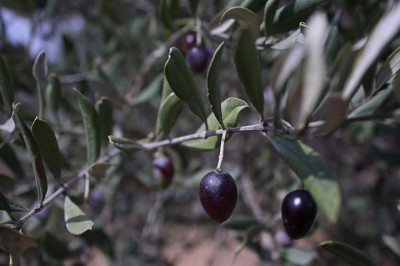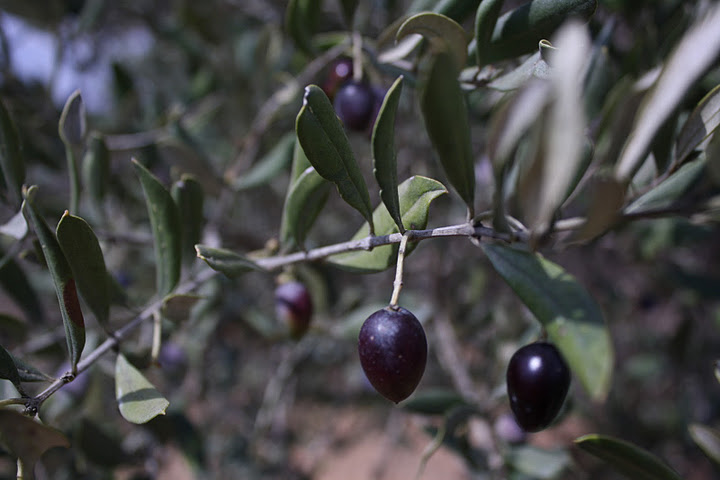by Alistair George
30 September 2011 | International Solidarity Movement, West Bank
Balata refugee camp, 2km east outside of Nablus, in the North of the West Bank, is a densely packed grid of permanent buildings and tight streets, many narrower than shoulder-width. Buildings rise higher each year as residents add extra storeys to cope with chronic overcrowding and lack of space. Having been founded in 1950, Balata was initially designed to house 5000 refugees forced from their homes during the 1948 Nakba [Catastrophe]. There are now more than 25,000 people crammed into the 1km2 camp and many residents live in extreme hardship with poverty, limited educational opportunities, poor health and mass unemployment added to overcrowded housing conditions.
The Yafa Cultural Centre was founded in 1996 to address many of the problems faced by Balata’s inhabitants. The bright, modern building is located near the Jacob’s Well entrance to the camp and rises several stories high. It is full of bustling activity as Balata residents and international volunteers mingle.
The Centre has a children’s library providing much needed access to books, educational films and games to children in the camp. There is a media centre which trains young people in journalistic skills and produces films depicting the reality of life in Balata, many of which have been shown in Europe, the USA and across the West Bank. A computer laboratory provides internet access and courses in Microsoft Office programs and Photoshop.
The Centre has a modern, fully-equipped theatre where students learn musical instruments and dabke (Arabic folk dancing). Local residents work with international volunteers, such as dance choreographers and lighting technicians, to gain the necessary skills to stage plays – often representing the history of the camp and the Palestinian people.
Mustafa Farah is a young man from Balata, wearing a back-to-front baseball cap and a garish orange ‘Dubai’ t-shirt. Like many residents, Mustafa is extremely proud of the Centre and its achievements. Mustafa says that the Centre provided him with a camera and photography courses run by international volunteers and has enabled him to produce work as a photographer, graffiti artist and music producer. His photography has been exhibited in London, although he was unable to get the necessary permits to attend.
Mohammed Issa, is an affable, bearded 32 year old man. He has lived in Balata all his life, although his family was expelled from a small village next to Tulkarm in 1948, which now lies behind the green line in Israel. Like many residents of the camp, Mohammed does not want to gain full Palestinian citizenship as it would mean forgoing the right to return to his family’s village. Mohammed struggled to find work until he was given a job at the Centre as an IT support worker and tour guide, showing foreign visitors around the camp.
Mohammed says that the Centre does incredible work in developing the skills of Balata residents, particularly focusing on women and the youth, and promoting democracy and civil society. The Centre also plays a vital role in raising awareness of the historical plight of the Palestinians and the continuing resonance of the Nakba.
However, Mohammed worries greatly about the psychological impact of the Israeli occupation, particularly on the camp’s children.
Balata played a leading role in the First and Second Intifadas and the camp has been subjected to repeated incursions, killings and sniper attacks by the Israeli military. During their incursions into the camp, the Israeli military has been reluctant to pass through the dense, narrow streets of Balata, preferring instead to occupy houses and travel across the camp by smashing through walls to move through adjacent properties. Israeli forces continue to stage raids in Balata, arresting residents in the middle of the night.
Mohammed remembers a child handing him a piece of human flesh after a Palestinian was killed in the camp by Israeli military gunfire, “Who can hold such a thing in their hands?” he said.
He describes how he has seen children mimicking what they have witnessed by assuming the roles of Palestinian and Israeli soldiers; interrogating and beating each other whilst playing in the street.
As we walk through Balata there are many young boys playing in the streets, brandishing plastic toy guns. The Yafa Cultural Centre has a psychological unit providing therapy to the Balata residents but Mohammed worries for the future of the children as the trauma of the conflict is so ingrained and pervasive.
Mohammed admits to finding the emotional pressures of the living in the camp hard to bear.
He said, “I am proud to be a Palestinian and proud to be from Balata, but for me the camp is also like a prison.”
He used to escape the confines of the camp by hiking in the mountains that frame Balata but this is no longer possible as they have been taken over by Israeli military and observation posts.
Mohammed is still struggling to come to terms with the death of his younger brother, Ibrahim, who was killed by Israeli soldiers in 2006 at the age of 15.
Ibrahim was drinking tea on the rooftop of his house with a friend and another brother, when Israeli soldiers shot him from an adjacent building which they had occupied. Mohammed was sleeping in the house at the time and remembers waking to the sounds of distress that his mother and sister were making, “When I heard my mother and sister screaming I felt like a bullet had entered my own heart”. He rushed to the rooftop where he found his wounded brother lying next to a table laid out with tea. Ibrahim died in Mohammed’s arms; “He was more like a son than a brother to me. He could look into my eyes and know straight away how I was feeling, what I was thinking.” The Israeli military claimed afterwards that his brother had attacked them from the rooftop but Mohammed insists that “this was a lie – they were just drinking tea”.
Despite the collective hardship and trauma suffered by the people of Balata, the Yafa Cultural Centre offers respite, friendship and precious educational and cultural opportunities. They are always looking for international volunteers to share their skills and solidarity with the people of Balata. A theatre production at the centre on the 20 October 2011 will showcase the camp’s dabke, Palestinian hip-hop and storytelling talents. Several weeks of hard work between volunteers and creative Balata residents will demonstrate that there is the hope amongst the hardship in the 61 year old refugee camp.
Alistair George is an activist with International Solidarity Movement (name has been changed).


